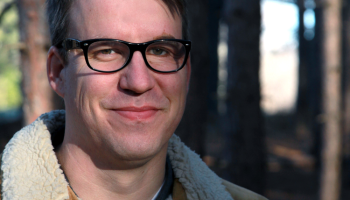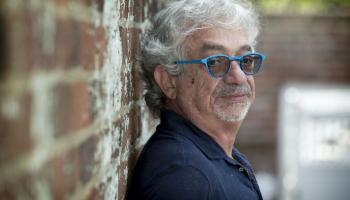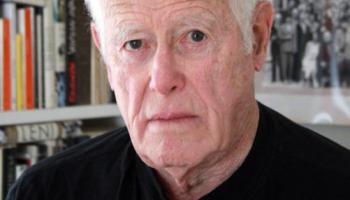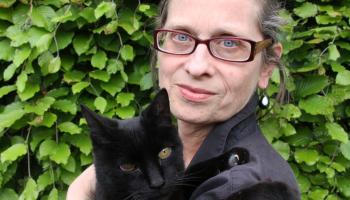A Chat with the 'Singularly Inventive' Kapnick Writer Jesse Ball

The Kapnick Foundation Distinguished Writers-in-Residence Program has been bringing critically acclaimed writers to Grounds since 2014 to teach and deliver memorable readings and lectures to broader audiences. This fall, the program is hosting Jesse Ball, an author of more than 20 books of short and long fiction, verse and drawings that have been translated into more than a dozen languages.
Ball is the ninth writer to accept a UVA residency in a program created to host writers of international stature for extended stays at the University to work with students and engage with Charlottesville’s broader literary community. Inspired by William Faulkner’s residencies at the University in 1957 and 1958, the program is made possible by a generous gift of the Kapnick family to the College and Graduate School of Arts & Sciences.
Students in the Department of English’s Creative Writing Program have had the opportunity this semester to share their work with and learn from Ball, whose work has been long-listed for the National Book Award and won the 2008 Paris Review’s Plimpton Prize for fiction and the Gordon Burn Prize. Ball read from his work on Nov. 6 in a free, public event in the Newcomb Hall Commonwealth Room sponsored by the Kapnick program.
Many of his celebrated books can be described as surreal works that challenge literary conventions. His latest book, the autobiographical Autoportrait, has been described as both experimental and an homage to French photographer Edouard Leve’s 2005 memoir of the same title.
Jane Alison, a UVA professor of creative writing, praises Ball as a singularly inventive writer. She describes Autoportrait as “an extended self-portrayal made of streaming sentences that care little about narrative conventions but deeply about truths.”
“Jesse is an artist committed to the evolution of potential in writing,” Alison said.
A&S Communications recently caught up with Ball to discuss his work, the inspirations for the animal illustrations he shares on social media and his teaching approach as the latest Kapnick Distinguished Writer-in-Residence.
Q: The Kapnick Foundation Distinguished Writer-in-Residence has hosted James Salter, Caryl Phillips, Lydia Davis, Mark Doty, Ann Beattie and other celebrated authors. What made this residency appointment attractive to you?
JB: I was looking forward to working with the students here. They are very strong.
Q: The Los Angeles Times praised your recent memoir as a thoughtful, bleak impressionist” work. You’ve described its framework as “an approach that does not raise one fact above another, but lets the facts stand together in a fruitless clump.” What were you trying to reveal or illuminate via that approach?
JB: Simply that: our lives appear to have narratives because we train ourselves very carefully as humans to believe in narrative, in strict cause and effect, etc. But these narratives can be impositions. At the very least we often (even unconsciously) make claims that would not be thought true had someone been there on our shoulder through all of our born days. The style of Autoportrait is not a true cure for this, but only a partial one. It affords the well-intentioned a method to move somewhat beyond the memoir-as-validation or memoir-as-tell-all or memoir-as-parade-of-tragedy, etc. Also, it positions the writer vis-a-vis their own life as a person who does not know much more than anyone else. For I think we are largely ignorant of our own deeds, forgetful of our own thoughts; we muck about in darkness: that's being human.
Q: At the same time, as unsparing as your work can be in the revealing of uncomfortable moments in your life, there is a distinct humor in your work, like describing the Olympics as “a cross between the Donner party, the Salem witch trials, the invention of penicillin, and making a sandwich,” for example. What role does humor play in your writing?
JB: That quote pertains to a description not of the present Olympics, but of a reasonable Olympics in which there need not be separate events for men and women, an Olympics in which all could battle it out together. I suppose the joke is that this so-called Olympics exists already: it is life. That's why I named actual events. I think humor is simply the perception of contrary, contiguous, cross-eyed, parallel, points of view, descriptions of events. If we write perceiving that things exist many ways at once, it is naturally funny, or can be. Especially if the reader is a perceptive person. For a book to be funny, you need to have a reader who perceives how ridiculous life is.
Q: What inspires the illustrations of foxes and other animals that you post on social media?
JB: My interaction with the world is that once or twice a year, occasionally more, I post a small drawing of an animal on a site. I don't think I've done so in a while. The beast is probably due its lunch. As to why: I suppose I like to draw and there are a small number of people in various parts of the world who enjoy those drawings. I began because of an early love of monsters. I think there is a piece on Granta's website that explains the whole thing.
Q: You frequently take on “big ideas” in your work: the failings of the criminal justice system, the plight of the vulnerable in dystopian environments, the power of parental love as displayed in a dying father’s travels with his adult son. Where do you find inspiration for your projects?
JB: It's not inspiration, just observation: being alive and seeing the horrific way humans organize themselves. There is a lot of room for critique. Our task is, at the very least, to witness, and sometimes perhaps a bit more, if it is possible.
Q: Given your own path as a writer and your experience teaching at the School of the Art Institute of Chicago, what is your approach to teaching aspiring novelists and fiction writers?
JB: Mostly it is encouragement, and a commitment to un-doing or offering permission for the student to un-receive bad advice they have previously been given. A good writer will generally have been given reams of bad advice along the way. Beyond that, sharing true books, and demonstrating love and hopefulness. There is the technical matter of writing, which is a deep study, but has more to do with reading than with writing. Then there is the question of the elaborate motivational shell-game that must be played for the writer to manage to produce their works. It is a complicated thing, and it paralyzes a majority of individuals. Then there is the question of what to write. It behooves a writer to observe and to feel; these are things that also can be learned. Whether they can be taught is a different matter.









